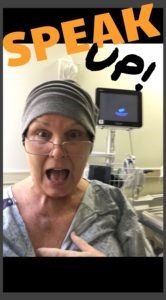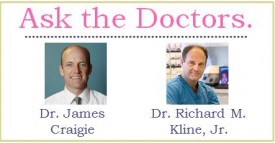
Everywhere you look, it seems there are blogs, posters, and articles that talk about how to stay positive while battling breast cancer. This is not a bad thing. It’s important for women to be encouraged and think good thoughts as they are dealing with such a serious illness.
However, when our only focus becomes positive reaffirmations and fuzzy pink boas, we forget to talk about another side of having cancer—a side that needs to be discussed.
We forget to talk about the ugly, dark, painful, uncomfortable, and scary side of having cancer.
We know, this isn’t a conversation that anyone enjoys having.
But it’s important.
Why? Because understanding the “uglier” sides of battling cancer is a part of what helps women move forward after their courageous battle.
Betsi Green, a breast cancer survivor and a patient at The Center for Natural Breast Reconstruction, wants to help women who are in the same situation as she was by sharing her story.
She hopes her story will help breast cancer survivors find peace and comfort as they make the transition into a post-surgical world—despite the challenges and discomforts that come with recovery.
Here’s Betsi’s story in her own words…
“Cancer is ugly. Cancer is raw. Cancer is painful. Cancer is more than simply losing your hair.” – Betsi Green
On the first of November, Dr. Paul Baron did a right skin sparing modified radical mastectomy with lymphatic mapping and sentinel node biopsy. In short that means Dr. Baron removed my right breast and a handful of lymph nodes.
In the operating room, Dr. James Craigie inserted an expander where my breast had been. The expander, as its name suggests, is used to expand the skin and keep the tissue viable for the reconstruction surgery.
During surgery, the expander is filled with air. Shortly after surgery, in a follow up appointment, the expander is filled with a saline solution. This is done in the surgeon’s office. The syringe is inserted in the center of the expander.

Let’s talk about the expander. It wasn’t painful. It was uncomfortable. It was very uncomfortable.
It was difficult to bend over. I felt like I had a brick on my chest. It was difficult to have water from the shower hit my tender skin. It was difficult to have material touching my skin.
Did I say it was uncomfortable?
The skin felt very thin and pulled, which I expected, just didn’t expect it to be as tight as it felt. Sleeping with the expander kept me to my left side or on my back.
It wasn’t until the first week of December, I noticed something was wrong. The bottom half of my expander had turned red.
Anytime you have a foreign object in your body, you want to keep a close eye on how it looks and/or feels. This bright red color told me something, and it was not good.
I did not feel any different. I had no pain. The uncomfortableness of the expander remained. These days, I really didn’t care what my chest looked like. However, in this case, looks mattered and I “kept an eye” on it. I was hoping it would simply go away on its own.
It turned out my expander was infected.

I share this with you for one particular reason: SPEAK UP! If you are uncomfortable, go see your team. If you think something is wrong…it probably is! There are things they can do to help the comfort level.
Don’t be shy. You are (or should be) in control of your cancer journey as much as possible. The doctors and their staff are not mind readers. Let them know if you need an “adjustment”.
Ask them how they can help you be more comfortable.
The cancer dance is an ongoing experience. My dance has been ongoing since June 2016. It will continue thru the 2017 calendar year. One appointment, one diagnosis, one doctor, one surgery, one chemotherapy treatment, and one CT scan does not complete the experience.
There are a lot of ugly things that can happen as you recover from your battle with breast cancer. But if you know about them, and speak up, you will be able to get the help you need.
You can make a huge difference in how your own personal cancer treatments affect you.

Be confident and as comfortable as possible as you move forward thru your own individual journey. And by all means…keep moving forward.
-Betsi Green
Check out Betsi’s blog and read more about her journey here.
Do you have any words of wisdom on recovering from breast cancer? Share them below!















